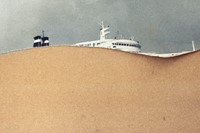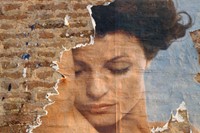As a new series of exhibitions demonstrates, Italian photographer Luigi Ghirri’s colour-rich photography and art theory was ahead of its time
Photographer and essayist Luigi Ghirri is “an under-known genius in post-war art,” curator James Lingwood tells AnOther from his hotel room in Essen. West Germany’s former coal-mining capital is now home to the region’s major museums and Lingwood is calling from the factory-flecked and lush green city while setting up his latest exhibition. At the David Chipperfield-designed Museum Folkwang, Luigi Ghirri The Map and the Territory – a display of approximately 250 of the 20th-century master’s works – serves as the “most significant survey of his work outside of Italy,” Lingwood explains.
Until this exhibition, the first of three across Europe in the next year, the world of Luigi Ghirri has been a fairly closed set for numerous reasons. A qualified surveyor, Ghirri moved to Modena in his twenties. Here, careful photographic mapping was part of his routine but it wasn’t long before he began exploring the artistic merits of the tool; he was fascinated by its force in the modern world, which he deemed saturated with colour imagery and advertisements. The fruits of his intrigue amounted to a decades-long survey of his locality – the three kilometre area that surrounded his home, to be precise. The resulting work is a compendium of extraordinary photographs, glowing with the elegant colour of the Kodachrome film of the time – close-ups of adverts, shop displays, postcard racks, reflections in puddles, people taking photographs of people. Each is an exquisite refraction of the image-bombarded world, but tethered to the local area.
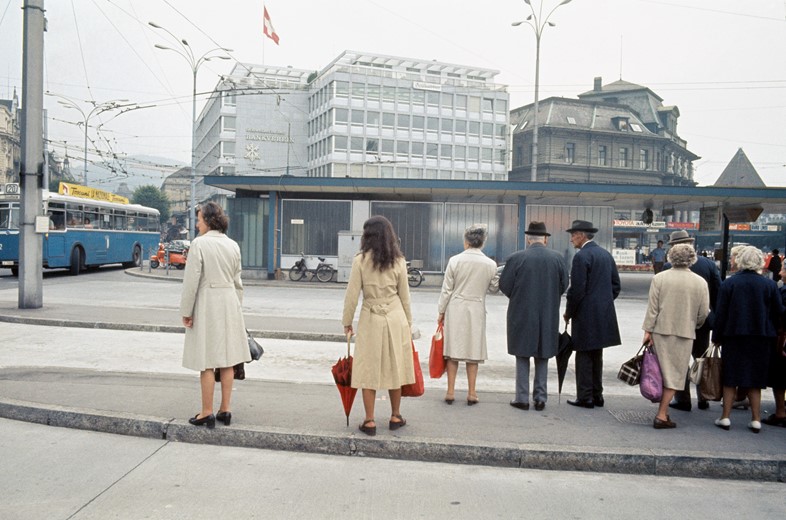
During this time, Ghirri was involved in an intellectual exchange with a group of Modena-based artists, from Franco Guerzoni to Carlo Cremaschi, Giuliano Della Casa and Claudio Parmiggiani, Oscar Goldini and Franco Vacari. It was with these painters, photographers and thinkers that he began publishing art books and exhibiting his photographs with each collection of works carefully conceptualised and presented alongside his acute analysis. And though his presence propelled the cultural life of the city, it was only five years ago that any of his prolific writing was translated into English by MACK books. Until then his legend circulated Italy with under-celebrated national pride.
Lingwood’s show and the accompanying MACK tome expands on Ghirri’s most memorable exhibition, Vera Fotografia. The 1979 show held in Parma’s Palazzo della Pilotta, comprised 14 series of images – a set of categories Lingwood has followed and embellished upon in an unprecedentedly vast presentation of the vintage 70s prints. “They’re exquisite, small – almost like haikus really,” Lingwood explains. “Everything he did had a focus on economy and I hope that comes across in the show.”

Economy, but also precision, define this body of work. Each chapter in the hefty and beautifully illustrated tome is framed by Ghirri’s explicit elucidation. It opens with Kodachrome, Ghirri’s first series, which serves as an agenda-setter for his whole process and is divided into precise sections: women, men, couples, children, animals, rituals, culture, celebrities, landscapes and nature, as he carefully explains. “My focus on the destruction of direct experience – the invasion of images into our living environments – begins here,” Ghirri writes by way of introduction. “In the work, I wanted to offer an analysis of truth and falsehood, of the gap between what we are, and the image of what we’re supposed to be – and ultimately to think critically about the denial and concealment of truth. This distinction between true and false is increasingly difficult to make, and it seems progressively impossible to get beyond the immediately visible.”
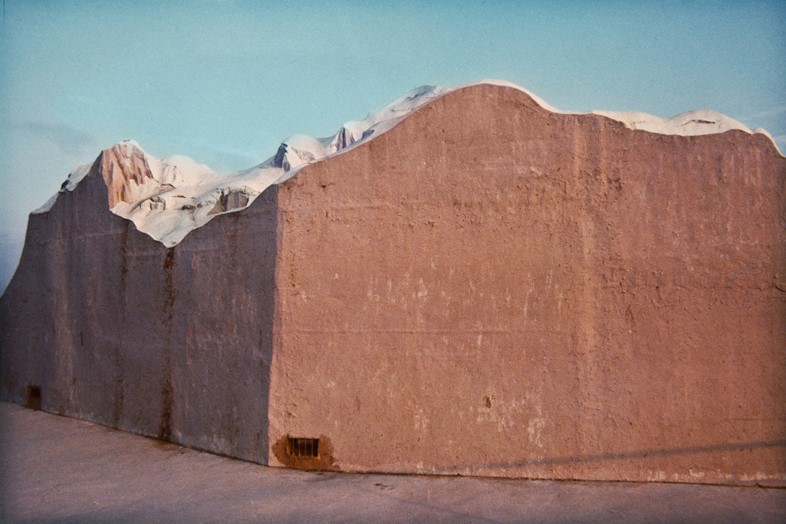
Kodachrome also frames the glorious play on colour that would set Ghirri apart, an element that left him discounted from so much of the artistic canon at the time since serious photography was then only wrought in black and white. “The world of the amateur was of great interest to Ghirri,” Lingwood explains. “So he decided to make his photographs, from the beginning, in colour. He said: ‘I take photographs in colour because the world is in colour’.” These reflections on amateur photography were of course by no means amateur – his mathematical eye and conceptual thought served to carve abstract and unusual compositions that both challeneged the visual culture of his day, and preceded ours. “Framing for Ghirri was incredibly important and often you see frames within the frame of the picture. So, there’s this recurrent theme of the frame and as it were, how the frame cuts a chunk of reality from what’s outside the frame.”

His thought processes were distinctly prescient too: his work operating as a response to a world that he referred to as a colossal photo montage, “at a time when colour images had invaded the everyday in a dramatic way,” Lingwood says. It’s as if Ghirri could be talking about our social media feeds today and the constant barrage of imagery many of us receive on a daily basis. Today Ghirri’s photographs feel all the more necessary for it. Despite their precision, each small frame (on average his prints stand at a modest 20 x 30 centimetres) offers a pause, a breath, a moment of calm. Their delicious colour draws the viewer in.
“I think the interesting thing with Ghirri is that once you spend time with his work, I think two things happen,” Lingwood explains. “Firstly, you can’t help but see the world yourself in a different way and secondly, it makes you look at the art of that time and subsequent art in a different way. With Ghirri as a frame of reference, you can see how much his work reverberates with photographers who are more well known. I’m not saying he influences them necessarily but his work reverberates within their work… I would love it if people came away from this exhibition with a sense that they’ve spent time with a deeply curious, philosophical, poetic person – a bit like spending a couple of hours reading Italo Calvino’s stories. You come out of that immersion with a renewed sense of how you want to look at and think about the world.” As such, it is surely never too late to introduce his work to a wider audience.
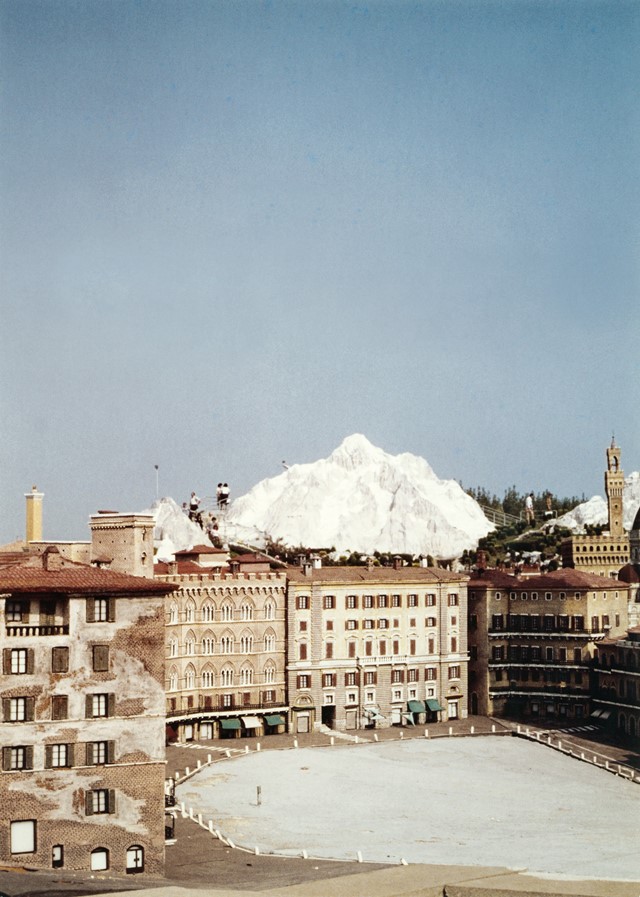
Luigi Ghirri The Map and the Territory exhibition runs at Museum Folkwang, Essen, until July 22, 2018; the Museo Nacional Centro de Arte Reina Sofía, Madrid, from September 25, 2018; and at Jeu de Paume, Paris, from February – May 20, 2019.
Luigi Ghirri The Map and the Territory, the book, published by MACK, is available now.



